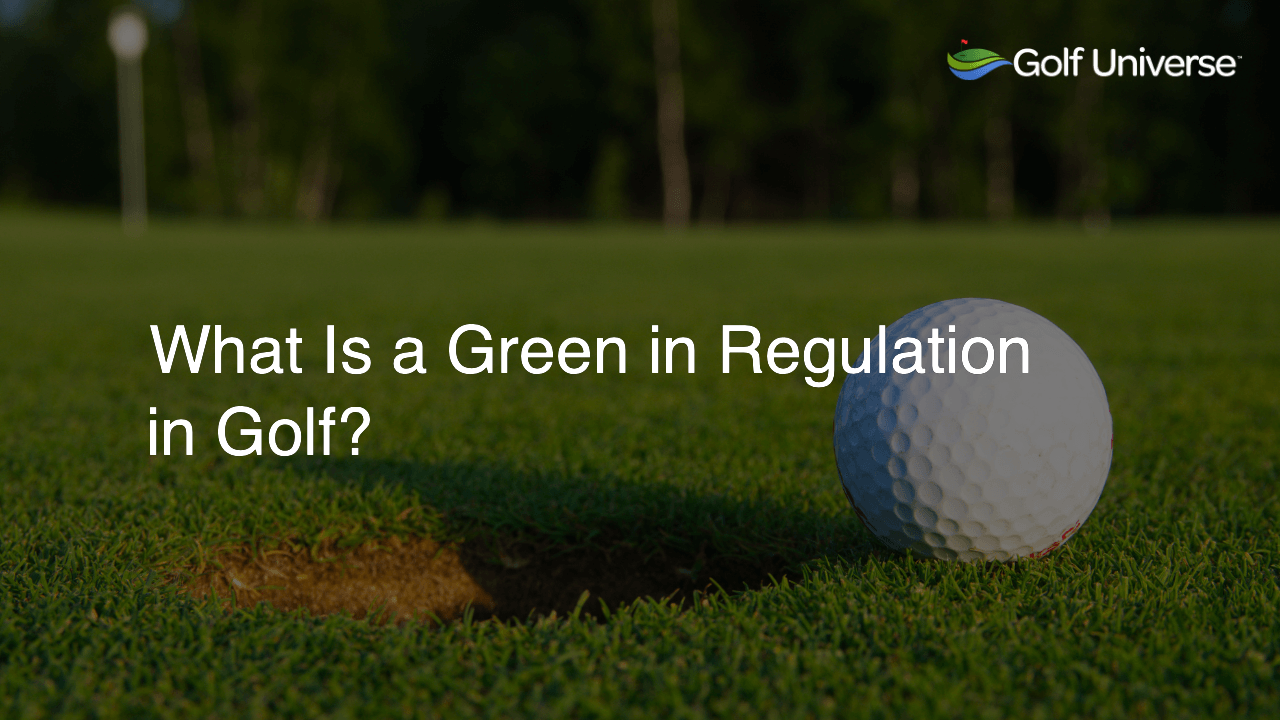A Green in Regulation (GIR) in golf refers to reaching the green with your ball in the allotted number of strokes based on the hole’s par. For example, landing on the green in 2 strokes on a par-4 hole or 3 strokes on a par-5 hole. GIR is a crucial metric to evaluate a golfer’s ability to hit greens consistently and maintain a lower score.
Understanding a Green in Regulation
A Green in Regulation (GIR) is an essential statistic in golf that measures a player’s ability to reach the green within the prescribed number of strokes based on the hole’s par. GIR is an excellent indicator of a golfer’s proficiency in managing their approach shots and game strategy.
Calculating GIR
To calculate GIR, consider the hole’s par value and subtract 2. This number represents the maximum number of strokes required to reach the green and achieve GIR. For example:
- On a par-3 hole, landing on the green after the tee shot (1 stroke) is a GIR.
- On a par-4 hole, reaching the green in 2 strokes is a GIR.
- On a par-5 hole, landing on the green within 3 strokes is a GIR.
Why GIR Matters
Attaining a high GIR percentage demonstrates a golfer’s ability to hit greens accurately and in a timely manner. GIR is significant because:
Consistent Scoring
A higher GIR percentage often correlates with lower scores, as it increases the likelihood of making pars or birdies. Golfers who consistently hit GIRs will consistently deliver better results and maintain a lower overall score.
Ball Striking
GIR values reflect a golfer’s competence in ball striking, particularly with long and mid-irons, hybrids, and fairway woods. Players who successfully strike the ball and control their trajectory will experience a higher GIR percentage.
Course Management
Good course management skills play a vital role in achieving high GIR percentages. Golfers must consider elements such as hazards, wind, terrain, and pin placements to ensure they strategically hit the green with accuracy.
Improving Your GIR Percentage
Enhancing your Green in Regulation percentage is an essential aspect of improving your overall golf performance. By focusing on a few key areas, golfers can elevate their GIR and lower their scores.
Club Selection and Custom Fitting
Choosing the appropriate golf clubs and ensuring they are custom-fit to your swing is crucial for optimizing your chances of hitting more greens in regulation. At Golf Universe, our experts highlight the importance of getting the correct shaft flex, club head design, and lie angle to provide better control and consistency.
Practice with Purpose
Maintaining a deliberate practice routine helps hone essential skills required to achieve better GIR percentages. Golf Universe emphasizes the significance of spending dedicated time practicing approach shots from various yardages to develop your ability to control distance and trajectory consistently.
Mental Preparation and Course Strategy
Furthermore, Golf Universe encourages golfers to enter each round with a clear mindset and strategic plan for navigating the course. This includes analyzing the layout, understanding wind conditions, and managing hazards to improve your chances of hitting greens in regulation.
Golf Universe: Your Gateway to Expert Golf Knowledge
Here at Golf Universe, we’re passionate about golf and committed to helping you develop your skills and reach new heights in your game. Stay informed with our blog, featuring a wealth of information, updates, and insights to keep you on top of your golf journey. And remember, a higher Green in Regulation percentage is just one of the many aspects that contribute to success on the golf course.
FAQ Section
We understand that our readers may have additional questions related to Greens in Regulation and improving their golf game. To address these queries, we’ve compiled five common questions, along with their direct and concise answers.
What is the average GIR percentage for amateur golfers?
Amateur golfers typically have a GIR percentage around 30-40%. However, this number varies greatly depending on the golfer’s skill level and experience.
How does GIR percentage relate to handicaps?
Generally, a higher GIR percentage correlates with a lower handicap as it indicates better approach shots and consistent scoring. Golfers with higher GIR percentages often have lower handicaps and vice versa.
Which clubs should I focus on to improve my GIR percentage?
Work on your long to middle irons, hybrids, and fairway woods, as these clubs are usually used for approach shots. Custom fitting and regular practice with these clubs will enhance your accuracy and distance control, contributing to a higher GIR percentage.
How can I track my GIR percentage during a round?
Keep track of the number of greens you hit in regulation during your round. Then, divide this number by the total number of holes you played. Multiply the result by 100% to obtain your GIR percentage for that specific round.
Is GIR the only factor that determines a good golf game?
Although GIR is crucial, it is not the only factor determining a successful golf game. Other aspects, such as short game accuracy, driving accuracy, and putting performance, also contribute to a well-rounded and successful golf game.










